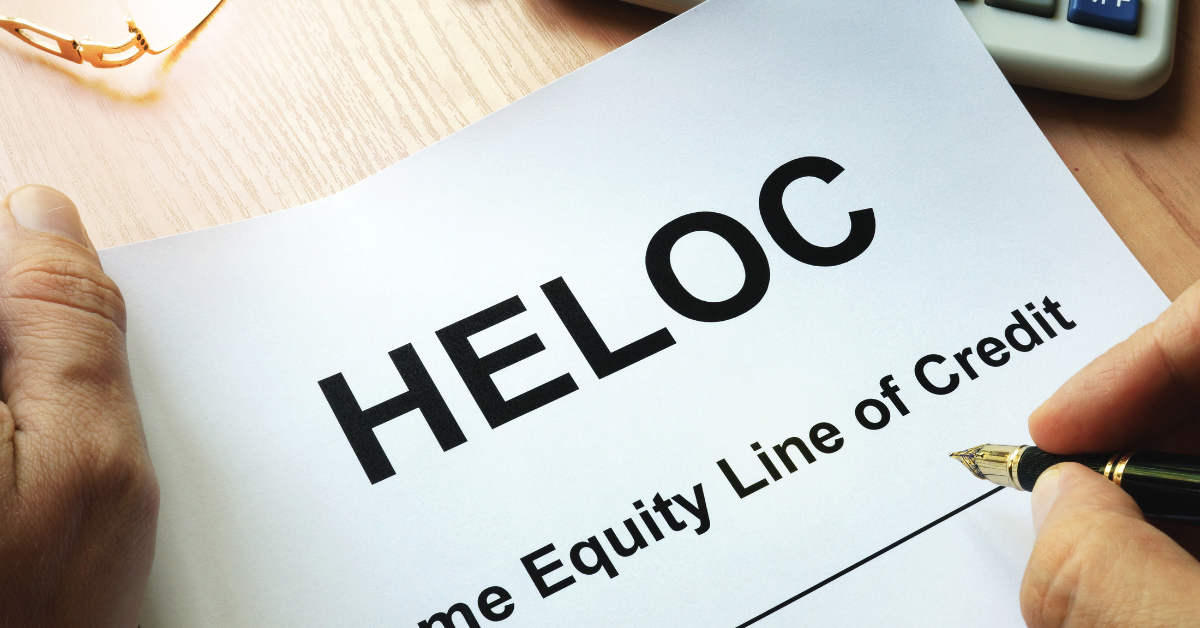Reverse Mortgage Versus Home Equity Line of Credit: Which Fits Bergen County Seniors in 2025?
By Ryan Gibbons, lifelong Bergen County resident and your North Jersey Partner for all things real estate.

Introduction
Bergen County homeowners have watched the value of your home climb to record territory while everyday costs rise right alongside property taxes. You may be living in a house that is home free and clear or carrying a manageable mortgage balance, yet you would like extra cash flow for health care, travel, or a long-planned home renovation project. Friends mention a reverse mortgage; bankers promote a home equity line of credit, better known as a HELOC. News sites debate whether a home equity loan or HELOC really helps retirees. The choices feel endless, and some headlines warn you could lose your home if you choose poorly.
This guide removes that noise. You will see local rate snapshots, real Bergen County fee ranges, cash-flow projections, and a decision framework recognized by HUD counselors. Along the way we will compare the pros and cons of each loan type so both seniors and their adult children understand how to tap equity in your home safely and keep long-term goals on track.

What a Reverse Mortgage Really Is
A reverse mortgage—formally the Home Equity Conversion Mortgage or home equity conversion mortgage—allows owners age sixty-two and older to turn your home equity into cash or a credit line without a required mortgage payment. Unlike a traditional mortgage or first mortgage, the loan balance grows because you pay interest later rather than monthly. Borrowers must live in the home, maintain the property, and stay current on taxes and insurance; otherwise the reverse mortgage lender may call the balance due. Federal rules also require an independent counseling session so applicants fully grasp the pros and cons of reverse borrowing.
A reverse mortgage may suit you if income is tight, you expect to remain in your home for many years, and you prefer an optional payment schedule. It is one of three types of reverse mortgages:
- Single-purpose reverse mortgages offered by some nonprofits and local governments for specific needs such as home improvement.
- Proprietary reverse mortgages backed by private companies that offer reverse mortgages on higher-value homes.
- Federally insured HECMs, the most common and the focus of this article.

How a HELOC or Home Equity Loan Works
A home equity line of credit allows you to borrow against the house much like a credit card. During the draw period—often the first ten years—you make principal and interest or interest-only payments based on a variable interest rate tied to Prime. Afterward, the balance amortizes so payments rise. Lenders also market a fixed-rate home equity loan that delivers a lump sum with predictable installments. Both options treat your home as collateral and require you to repay the loan on time.
Why pick a HELOC or home equity loan instead of a reverse mortgage? You may secure lower interest rates, avoid mortgage-insurance premiums, and keep more equity intact if you intend to sell your home within a decade. The trade-off is a mandatory monthly bill—even in retirement.
Key Differences You Need to Know
| Feature | Reverse Mortgage | HELOC / Home Equity Loan |
|---|---|---|
| Minimum age | 62 | None |
| Required monthly payment | Optional | Yes |
| Interest type | Adjustable or fixed | Variable or fixed |
| Credit score focus | Flexible | Standard underwriting |
| Counseling | Mandatory HUD session | Optional |
| Early pay-off penalty | None | Rare |
Alt text: Table comparing reverse mortgage and home equity line of credit features.
Local Rate Snapshot: Mid-2025
- Reverse mortgage start rates in North Jersey average 7.65 percent for fixed products; several lenders quote interest rates near 5.875 percent on adjustable lines.
- The national HELOC average on June 11, 2025, stands at 8.22 percent.
- North Jersey Federal Credit Union advertises an 8.50 percent promotional interest rate on a variable line of credit.
Rates update weekly, so always request a written estimate that lists loan amount, margin, caps, and total fees.

The Full Cost Picture Beyond Interest
Up-front expenses
A reverse mortgage loan includes a two percent mortgage insurance premium at closing, plus origination, appraisal, and legal fees. A home equity loan may charge an appraisal, title search, and recording fees that range from five hundred to twelve hundred dollars. Either way, you will sign documents with a mortgage lender who records a lien just like any other mortgage loan or second mortgage.
Ongoing obligations
Both loans require you to maintain the home and keep taxes and insurance current. Reverse borrowers pay a half-percent annual insurance premium that protects them if the loan balance ever exceeds the value of the property. HELOC borrowers may owe a yearly maintenance fee. Remember: Missing three HELOC payments risks foreclosure, while a reverse mortgage can provide payment flexibility but will mature if you move out for twelve consecutive months.
Eligibility and Risk Factors for Bergen County Seniors
- Credit score: Reverse underwriting checks residual income rather than strict debt-to-income, helping retirees with limited taxable income. HELOC lenders still look for a mid-six hundred score or higher.
- Property condition: HUD appraisers inspect safety items. Major repairs can delay funding, but they may be financed through the reverse mortgage itself.
- Trigger events: Failing to pay taxes, long hospital stays, or deciding to sell the home will end a reverse mortgage. Missing HELOC payments immediately end promotional terms and raise the interest rate.
Families should stress-test payments at today’s rates plus two percent and ask how a future home renovation or medical bill would affect the life of the loan.
Case Study: Tapping Equity in a Paramus Home Worth $850 000
Scenario A: Reverse mortgage line of credit
James and Linda, both seventy-five, own their home outright. They qualify for a reverse mortgage that opens a line of credit around three hundred forty thousand dollars. They draw one hundred thousand for living expenses and a modest home improvement, choosing not to make payments. At an initial interest rate of 5.875 percent, the reverse mortgage balance grows to about one hundred thirty-one thousand after five years. Equity remains above six hundred fifty thousand.
Scenario B: Ten-year HELOC
Maya and Robert, credit scores 740, open a three-hundred-thousand-dollar HELOC at 6.76 percent. They borrow the same one hundred thousand. Monthly interest runs roughly five hundred sixty dollars. When the draw period ends, the payment rises to about nine hundred eighty dollars as principal and interest amortize. If they repay aggressively, they keep more equity, but discipline is essential.
Bottom line: The reverse route boosts cash flow today, while the HELOC offers flexibility and potentially lower costs if paid quickly. Choosing between them depends on how long you will stay in your home, your comfort with payments, and whether you expect to sell your home or leave the home in your estate.

Required Counseling and Trusted Local Resources
- Bergen County Division of Senior Services, Hackensack – HUD-approved for reverse mortgage counseling (201-336-7431).
- HUD counselor directory – Search by ZIP for phone or video sessions.
- CFPB “Find a Counselor” lookup – Verify any mortgage lender or agency.
Counseling certificates last one hundred eighty days, giving families space to compare loan type offers.
How to Decide: A Three Step Framework
- Clarify housing plans – Will you refinance the reverse mortgage later, sell the home, or age in place?
- Stress-test cash flow – Model best and worst interest rate scenarios with your adviser and discuss whether a personal loan or even credit card debt consolidation fits the picture.
- Book HUD counseling – Bring family, list questions about money from the loan, and confirm whether you can borrow against the equity again through a new loan if circumstances change.
Tax, Medicaid, and Benefit Implications in New Jersey
If the interest rate on a reverse mortgage or home equity line of credit catches your eye, remember that tax treatment and benefit eligibility can matter just as much as cost. Under IRS rules, proceeds from a reverse mortgage loan are considered loan advances, not income, so they are not taxable and don’t affect Social Security or Medicare premiums. irs.gov The same rule applies to draws on a HELOC or a fixed-rate home equity loan—they are debts, not income—although any deductible home improvement interest is limited to funds used to “buy, build, or significantly improve” the residence. irs.gov

New Jersey’s “Senior Freeze”
The state’s popular Senior Freeze (Property-Tax Reimbursement) program bases eligibility on gross income. For 2024 filings, a household must remain under $168,268 in total income; that cap rises to $163,050 for the 2023 base year and $150,000 for 2022. monroetwp.com Current guidance notes that reverse-mortgage amounts received are not counted as income because they are loan proceeds, but any interest earned on those proceeds in a bank account does count. Linking readers to your detailed Senior Freeze guide here helps them see the step-by-step paperwork.
Medicaid “Spend-Down” Reality
New Jersey long-term-care Medicaid allows homeowners to keep their primary residence, yet it limits countable resources to $2,000. A reverse-mortgage line of credit is not an asset while it sits unused; once you borrow—and if the cash is still in the account on the first day of the following month—it becomes a countable resource that can delay eligibility. Lump-sum HELOC draws trigger the same rule. investopedia.com The safest play is to schedule periodic advances that you immediately spend on approved costs (home care, taxes, repairs) rather than letting large balances idle.
| Event | Federal Income-Taxable? | Counts Toward Senior Freeze Income? | Counts Toward Medicaid Asset Test? |
|---|---|---|---|
| Monthly reverse-mortgage advance | No | No | Yes—but only if still on hand next month |
| Lump-sum HELOC draw | No | No | Yes if unspent by next month |
| Credit-line growth on HECM | No | No | No (not accessible cash) |
| Accrued interest on reverse mortgage | Not deductible until repaid and only for home improvement use | N/A | N/A |
| Property-tax reimbursement check (Senior Freeze) | Yes | N/A (it is the benefit) | Yes if retained |
Takeaway: Loan proceeds rarely jeopardize taxes or Senior Freeze benefits, but cash held too long can threaten Medicaid. Plan withdrawals with your elder-law attorney so equity supports care rather than blocking it.
Five Warning Signs a Loan Officer Isn’t Telling the Whole Story
1. Origination Fees Top FHA Caps
A reputable reverse mortgage lender follows the FHA rule: no more than 2 percent on the first $200,000 of your home value and 1 percent thereafter, capped at $6,000. If the quote is higher, walk away—your mortgage doesn’t have to start with an overcharge.
2. “You Must Take the Lump Sum Today”
Some officers push a full draw because it boosts commission. Remember, a credit line grows each year you don’t use it, so forced lump sums often enrich the salesperson more than you.
3. Hidden Rate-Reset Clauses
Adjustable reverse mortgages disclose lifetime caps, but a HELOC can hide a margin increase after the intro period. If the paperwork skips clear language on index, margin, and adjustment frequency, demand a corrected disclosure.
4. Steering You to One Product Only
If an originator can offer reverse mortgages and HELOCs yet refuses to give side-by-side numbers, that’s product steering. Ethical advisors outline pros and cons and let you choose.
5. “No Out-of-Pocket Costs—Ever”
Closing fees rolled into the loan balance still cost you interest for the life of the loan. A trustworthy officer shows both cash-to-close and financed-fee scenarios so you see the real price tag.

Glossary of Must-Know Terms
Credit Score – A three-digit gauge (300-850) of creditworthiness. HELOC lenders usually want 660 +; a HECM focuses more on equity and property charges, so a modest score may still pass underwriting.
Equity Line of Credit (ELOC) – A revolving account secured by your home; you can borrow, repay, and re-borrow during the draw phase. Often used interchangeably with HELOC, though some banks market fixed-draw EL-OCs.
Home Equity Conversion Mortgage (HECM) – The only federally insured reverse mortgage program. It caps loan amounts at FHA lending limits, mandates HUD counseling, and charges an upfront mortgage insurance premium plus an annual 0.5 percent fee.
Home Equity Line of Credit (HELOC) – A variable-rate credit line that uses your home as collateral. Payments are interest-only at first, then convert to principal and interest amortization, which can surprise borrowers with payment jumps.
Loan Balance – The running total of principal drawn plus accrued interest and any financed fees. Reverse-mortgage balances rise monthly; HELOC balances rise only when you borrow or capitalize unpaid interest.
Mortgage Insurance Premium (MIP) – An FHA charge that protects the borrower if the reverse mortgage balance ever exceeds the home’s value. It is 2 percent of the loan amount up front and 0.5 percent annually.
Principal and Interest Payment – The standard mortgage installment that reduces principal while covering accrued interest. Required on HELOCs after the draw period; optional on a HECM unless you choose to pay voluntarily.
Reverse Mortgage Lender – A bank or non-bank lender approved by FHA to originate HECMs. They must provide a TALC (Total Annual Loan Cost) disclosure outlining projected costs over the life of the loan.
Second Mortgage – Any junior lien—including a fixed-rate home equity loan or a variable HELOC—recorded behind your first mortgage. It generally features higher rates because repayment priority is lower.
Single-Purpose Reverse Mortgage – A low-cost municipal or nonprofit program that lets seniors borrow for a specific goal, usually taxes or home improvement. Loan amounts are small, but fees are minimal and counseling is still required.
Frequently Asked Questions
Which loan offers better tax deductions — a reverse mortgage or a HELOC?
Neither product is a guaranteed write-off. You may deduct interest only in the tax year you actually pay it and only on funds used to “buy, build, or substantially improve” the property. With a reverse mortgage, that usually happens when the loan is repaid in full (sale, refinance, or estate settlement). With a HELOC, you can deduct eligible interest each year you make payments, but only on the portion tied to home-improvement spending and within the IRS’s overall $750,000 mortgage-interest cap. Always keep invoices and talk to a tax pro before counting on the deduction.
Can I pair a reverse mortgage with downsizing later?
Yes. When you sell, the closing attorney pays off the reverse-mortgage loan balance first; any leftover equity becomes yours to put toward a condo, 55-plus community, or to fund care. Many homeowners then take out a home-equity loan or HELOC on the new property for extra flexibility—so long as they qualify under the new lender’s credit and income guidelines.
What if home prices dip and my equity disappears?
With a federally insured Home Equity Conversion Mortgage, the FHA insurance fund absorbs any shortfall at payoff, so neither you nor your heirs owe more than 95 percent of the home’s market value. A HELOC (or fixed-rate home-equity loan) has no such safety net; you must repay the full balance even if the house sells for less.
Does a low credit score shut me out?
A bruised credit score can block a HELOC—most banks want at least the mid-600s plus verifiable income. A reverse mortgage weighs equity and your ability to keep taxes and insurance current, so many seniors with fair credit still qualify. That said, serious delinquencies on federal debt must be resolved before closing.
How do lenders figure out my maximum reverse-mortgage line?
They plug four inputs into the HUD calculator: (1) the youngest borrower’s age, (2) the current interest rate (higher rates reduce the line), (3) the value of your home up to the FHA lending limit, and (4) FHA’s principal-limit factors released each year. Older age, lower rates, and higher home value all expand the credit line, but FHA caps disbursements during the first 12 months to help manage risk.
Which is better — a home equity line of credit or a reverse mortgage?
“Better” depends on cash-flow needs, repayment tolerance, and long-term plans. A reverse mortgage eliminates mandatory monthly payments as long as you live in the home and meet tax, insurance, and maintenance obligations, but it steadily increases the loan balance. A HELOC requires regular payments and can spike if the interest rate climbs, yet it preserves more equity if you pay it down quickly. Families who want maximum cash flow often prefer the reverse mortgage, whereas borrowers planning to sell the home or repay within ten years sometimes lean toward a HELOC.
What is the monthly payment on a $50,000 home equity line of credit?
During the draw period most lenders set payments at one-twelfth of the annual interest. At today’s 8 percent variable rate, $50,000 would cost roughly $333 per month. After the draw phase ends, the balance amortizes—on a fifteen-year repayment schedule the same $50,000 at 8 percent would jump to about $478 each month because you now pay principal and interest. Always request a written amortization table so you see the future jump before you sign.
Why do some banks hesitate to recommend reverse mortgages?
Profit margins on small HELOCs and conventional refis are often higher and easier to service than a government-insured reverse mortgage that carries strict counseling and disclosure rules. In addition, a few loan officers worry about reputational risk if borrowers misunderstand the pros and cons. That reluctance does not mean a reverse mortgage is risky for every homeowner—it means you should choose an experienced reverse mortgage lender who explains fees, mortgage insurance premiums, and payoff triggers in plain English.
What is the “95 percent rule” on a reverse mortgage?
If heirs wish to keep the property after you pass, they can repay the reverse mortgage loan for the lesser of the full loan balance or 95 percent of the home’s appraised value at that time. The FHA insurance fund absorbs any shortfall, which is why borrowers pay the upfront and annual mortgage-insurance premium.
Are there different types of reverse mortgages?
Yes. The federally insured Home Equity Conversion Mortgage (HECM) is the most common. Proprietary reverse mortgages serve higher-value homes above the FHA limit, and single-purpose reverse mortgages offered by some local agencies help with targeted needs such as property taxes or home improvement. Each version follows different lending limits, fees, and counseling rules, so clarify which product your lender is quoting.
Can seniors still qualify for a traditional home equity loan?
Age alone does not bar anyone from a fixed-rate home equity loan or second mortgage. Lenders look at credit score, income, and the value of your home. Retirees who receive Social Security, pension, or annuity income can—and often do—secure conventional equity loans, but they must document the capacity to repay the loan just like younger borrowers.
What fees will I pay on a reverse mortgage?
Expect four main costs: (1) an upfront mortgage-insurance premium equal to two percent of your home’s appraised value up to the FHA limit; (2) an origination fee capped at $6,000; (3) third-party charges such as appraisal, title search, and recording; and (4) an annual 0.5-percent mortgage-insurance premium on the outstanding balance. Many seniors roll these expenses into the loan, but financing fees means they accrue interest for the life of the loan.
Choose Equity Tools That Match Your Next Chapter
A reverse mortgage is typically the right fit when cash flow is king and you intend to remain in your home indefinitely. HELOCs and home equity loans may shine when you plan a future move, prefer shorter terms, or expect to repay quickly. Both solutions turn your home equity into cash, but each carries unique obligations. The smartest move is to compare real written estimates, review the cons of reverse mortgages and the fine print on helocs and home equity loans, and lean on neutral counseling before signing.
Ready to talk numbers with someone who has guided Bergen County families for two decades? Call or text me at 201-685-4788. Together we will map a strategy that protects your lifestyle, your legacy, and the roof you love.
